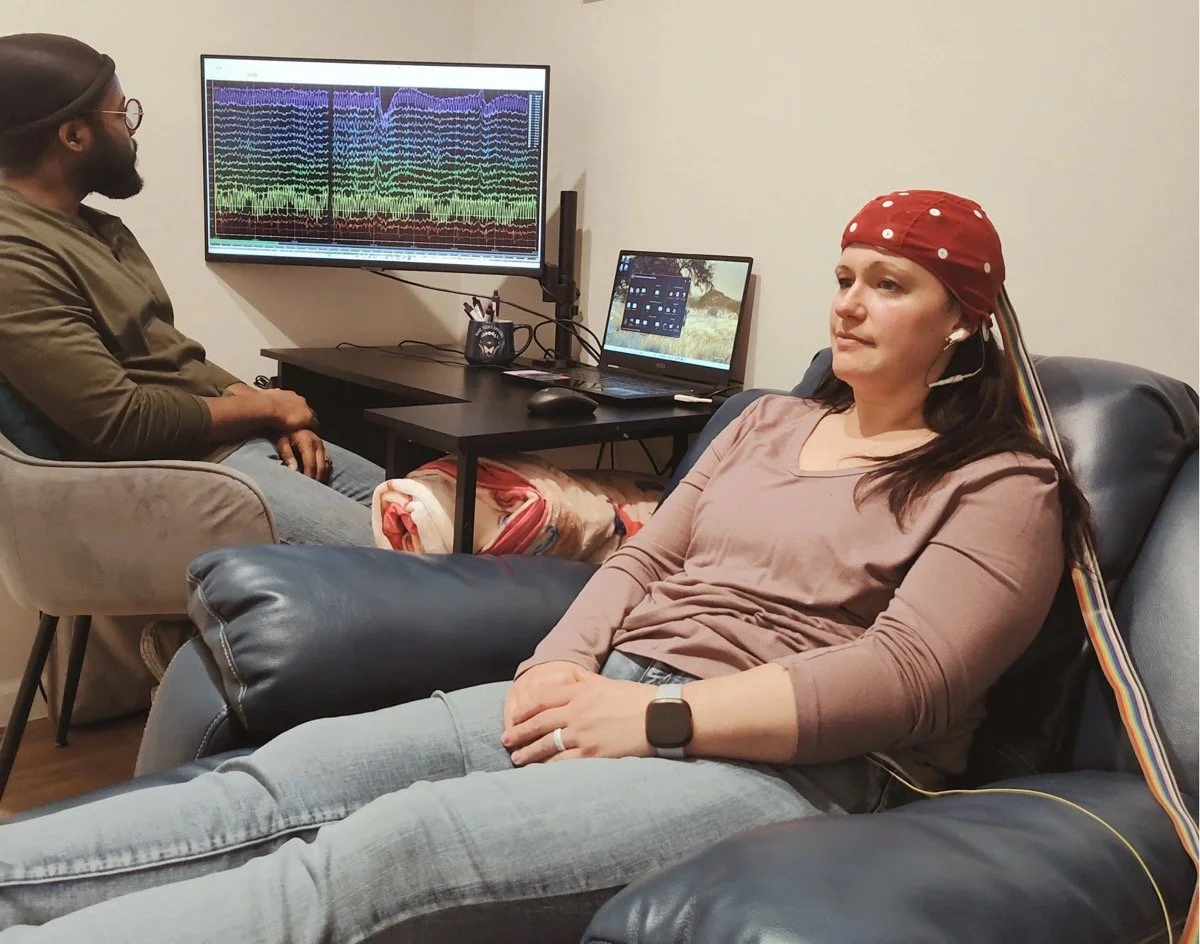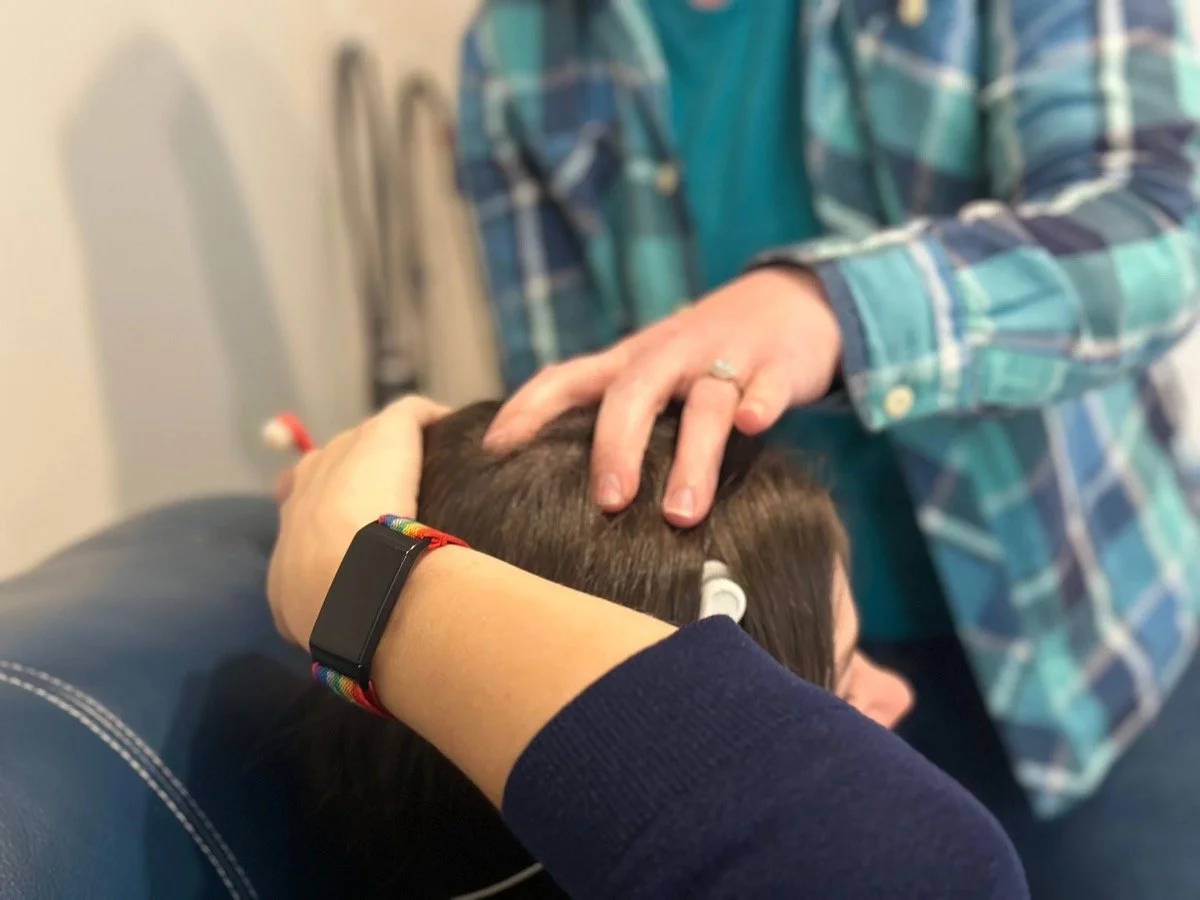WHAT TO EXPECT
Neurotherapy is an unfamiliar form of treatment for most clients, and we know that the unknown can be a little scary. We want to help you to understand the process and to feel as prepared and comfortable as possible before you walk into our door.
In addition to the information provided below, we do meet with every interested client for a consultation appointment, in which we will review the process and answer any questions that you might have.
STEP ONE: CONSULTATION AND INTAKE PAPERWORK
First we’ll meet by phone or in person at our Bellevue office for a free 30-minute consultation.
In this meeting, we will discuss:
Your expectations and goals
What you can expect from Neurotherapy treatment
Any counter-indicators or factors that may prohibit you from receiving benefits from Neurotherapy
Cost and scheduling
Following the consultation, we will send out an electronic questionnaire and intake paperwork, which will include medical history, developmental history, and current symptoms. These should be filled out thoroughly and accurate to get the best treatment plan customized for you. Additional screenings may be needed based on the results.
STEP TWO: BRAIN SCAN AND INTAKE INTERVIEW
Every client begins with a comprehensive brain scan and intake interview, allowing us to understand your unique needs and tailor a neurotherapy treatment plan just for you.
At Transformative Neurotherapy, we use state-of-the-art technology to assess brain activity and functioning through EEG, Event-Related Potentials (ERP), and Quantitative EEG (qEEG) Brain Mapping. EEG brain scan takes about 2 hours to complete and includes 20 minutes of collecting data with your brain at rest (10 minutes eyes open, 10 minutes eyes closed), 30 minutes of ERP to record of your brain responses to Audio and Visual stimuli, and some in-depth questions to create a treatment plan that best suits you.
EEG (Electroencephalogram)
An electroencephalogram (EEG) is a non-invasive medical test that measures and records the electrical activity of the brain. The procedure is painless and involves the placement of a cap equipped with 19 gelled channels on the patient's head. EEGs are utilized for both neurological diagnostics and research purposes, particularly for conditions characterized by abnormal brain wave patterns or rapid changes in neural activity.
Event-Related Potentials (ERPs)
Event-related potentials (ERPs) measure electrical brain activity in response to events, giving insight into perception, attention, and cognition. This shows how the brain reacts to stimuli and how it communicates to other parts of the brain, which can be affected by trauma, brain injury, or processing speed. This information is used to create a personalized treatment plan to optimize brain function better than the EEG alone.
Quantitative Electroencephalography (QEEG)
A QEEG, or Quantitative Electroencephalography, is a modern form of EEG analysis that uses digital technology to record and mathematically analyze electrical activity in the brain. Sometimes referred to as "brain mapping" because it provides a detailed, quantitative picture of brain function across different regions.
QEEG differs from traditional EEG in that it goes beyond simple visual inspection of brainwave patterns. Instead, it applies statistical and mathematical methods to extract features like frequency band power, connectivity, and network activity, comparing these metrics to normative databases of typical brain function for a patient’s age group. In other words, it compares your EEG with the EEGs of a similar demographic. This allows clinicians to identify abnormalities or dysregulation in brain activity that may be associated with a range of neuropsychiatric and neurological conditions.
HRV (Heart Rate Variability)
Heart rate variability (HRV) is the physiological phenomenon of variation in the time interval between consecutive heartbeats. These variations are typically quite small—often just a fraction of a second—and are controlled by the autonomic nervous system (ANS), which regulates automatic bodily functions such as heart rate, blood pressure, and breathing.
HRV reflects the balance between the sympathetic (fight-or-flight) and parasympathetic (rest-and-digest) branches of the ANS. A higher HRV generally indicates a healthy, adaptable autonomic nervous system, suggesting better resilience to stress and a well-functioning cardiovascular system. Conversely, lower HRV is often associated with stress, illness, or less adaptability, and may signal current or potential health problems such as heart disease, anxiety, or depression. Your heart rate is measured during the EEG and this information is included in your take-home report to add better insight into your health.
STEP THREE: REPORT AND TREATMENT PLAN REVIEW
The insights gained from your brain scan and analysis guide us in creating a personalized treatment plan designed to address brain imbalances. We will schedule time with you to review your brain scan report and discuss our recommended treatment plan.
If neurotherapy is recommended, we will work together to create a customized treatment plan. Treatments can range from individualized intensives to a minimum of 3 treatments/week initially, then reducing frequency over time as the brain is able to maintain progress. To get the best results, consistency is the key!
If we identify areas that neurotherapy alone cannot fully support, we will collaborate with trusted specialists—including neurologists, functional medicine doctors, chiropractors, primary care physicians, psychiatrists, and endocrinologists—to ensure you receive the most comprehensive care possible.
STEP FOUR: NEUROTHERAPY TREATMENT
For anyone starting with Neurotherapy, we recommend 10-20 treatments followed by a rescan. The rescan is important to show how much progress has been made and if we need to adjust the treatments based on how well your brain responds to treatment.
Some clients have reported improvements after the first treatment while others said that 9 was the magic number. Every brain is unique!
Neurotherapy treatments must be performed in person in our Bellevue office. Sessions last between 40 to 60 minutes, and some treatment plans may recommend multiple sessions in one day. If scheduling multiple sessions, they must be scheduled at least one hour apart, to allow your brain to rest.
Progress will be tracked through self-reporting of symptom or behavior changes from session to session, with an updated brain scan completed after every 10 - 20 treatment sessions, as necessary.





